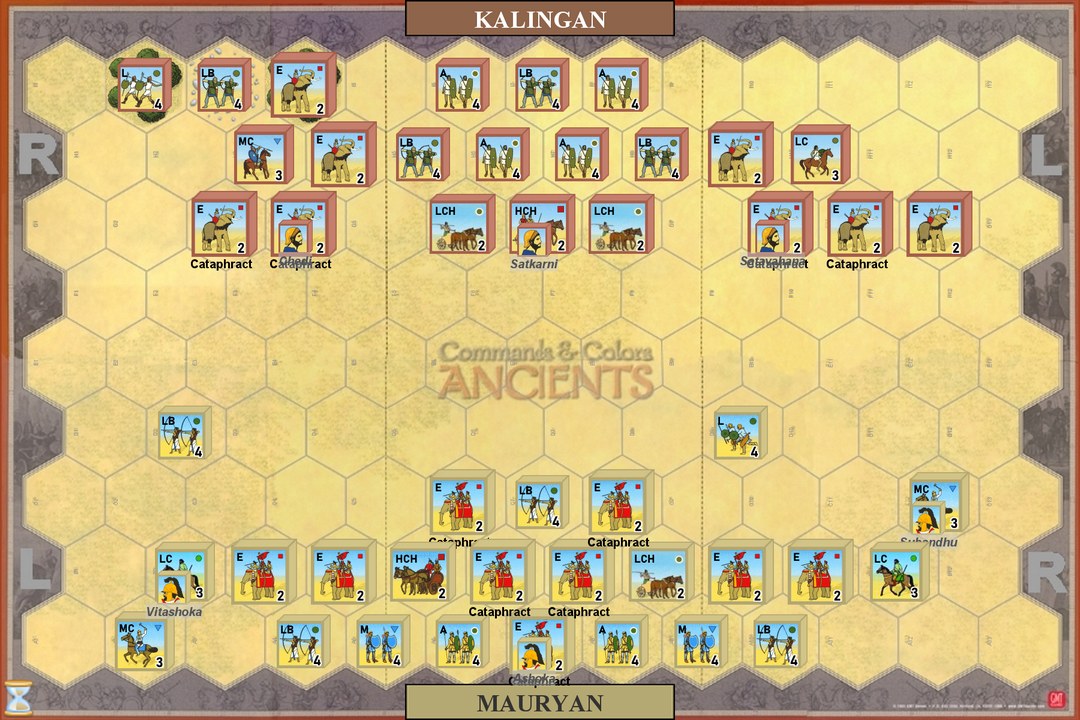Historical Background
"Bindusara was fortunate in having in his sons, especially Ashoka ('Free of Sorrow'), 'Proconsuls of exceptional ability' who did much to curb the rebellious princedoms and clans in outlying provinces. With their help it was not difficult to maintain the empire inherited from his father, Chandragupta, and even to extend its boundaries.
Ashoka was the viceroy of Takshashila prior to his ascension to the throne, which he seized-as legend has it-as outcome of a fraticidal struggle that he waged after his father became ill. There is no clear evidence, but some scholars make Ashoka the son of Bindusara and the Greek princess Helen, daughter of Seleucus.
Chandragupta and Chanakya had been hostile to non-monarchial states. Many such states, quasi-democratic oligarchies as well as republics, had been weakened by the wars with Alexander, and that weakness made possible the eventual hegemony of the Mauryan Empire. Thus, the Mauryans had always kept a wary eye on Kalinga. A large and fiercely independant sagha (republic), Kalinga had been originally conquered by Ugrasena Nanda, but regained its independence during the rule of Sahalya and remained so until the reign of Ashoka Maurya.
Eight years after his anointment, Ashoka marched on kalinga. On a battlefield near the village of Dhauli the Kalingan army was defeated. Records affirm that 100 thousand were killed, 150 thousand were deported (enslaved), and many times that number died thereafter. It is said that the river Daya nearby ran red with the blood of the slain.
After the battle Ashoka ascended the nearby hillocks to survey the field he had won; in the twilight he saw heaps of dismembered bodies of soldiers and animals, heard the cries of wounded, and witnessed the anguish of women searching the dead for their husbands and sons. As the story is told, the slaughter filled Ashoka with such anguish he changed from Chandashoka ('Ashoka the Terrible') to Dharmashoka ('Ashoka the Pious'). He became a Buddhist.
The Mauryan empire collapsed within 50 years of Ashoka's death. After its collapse, Kalinga briefly enjoyed its own small empire in Southern India.
The names of Kalingan leaders have been lost; names here are taken from prominent Kalingan dynasties that struggled for power when the Mauryan yoke was thrown off a generation later. Names for Ashoka's subordinates are taken from various sources associated with Ashoka's regime. Since Chanakya is probably retired by now (that rebellionin Takshashila cannot have helped his political career), he is replaced as Ashoka's second-in-command by Subandhu, who is said to have been Chanakya's political rival."
(From the GBOH Chandragupta module by Stephen R.Welch).
The stage is set. The battle lines are drawn and you are in command. The rest is history.

War Council
Kalingan Army
Leader: Unknown
Take 4 Command Cards ![]()
![]()
![]()
![]() .
.
Mauryan Army
Leader: Ashoka Maurya
Take 6 Command Cards ![]()
![]()
![]()
![]()
![]()
![]() .
.
Move First ![]() .
.
Victory
9 Banners
Special Rules
none.
These scenarios are based on the excellent GBOH Chandragupta module by Stephen Welch.
Read more notes/rules HERE.
